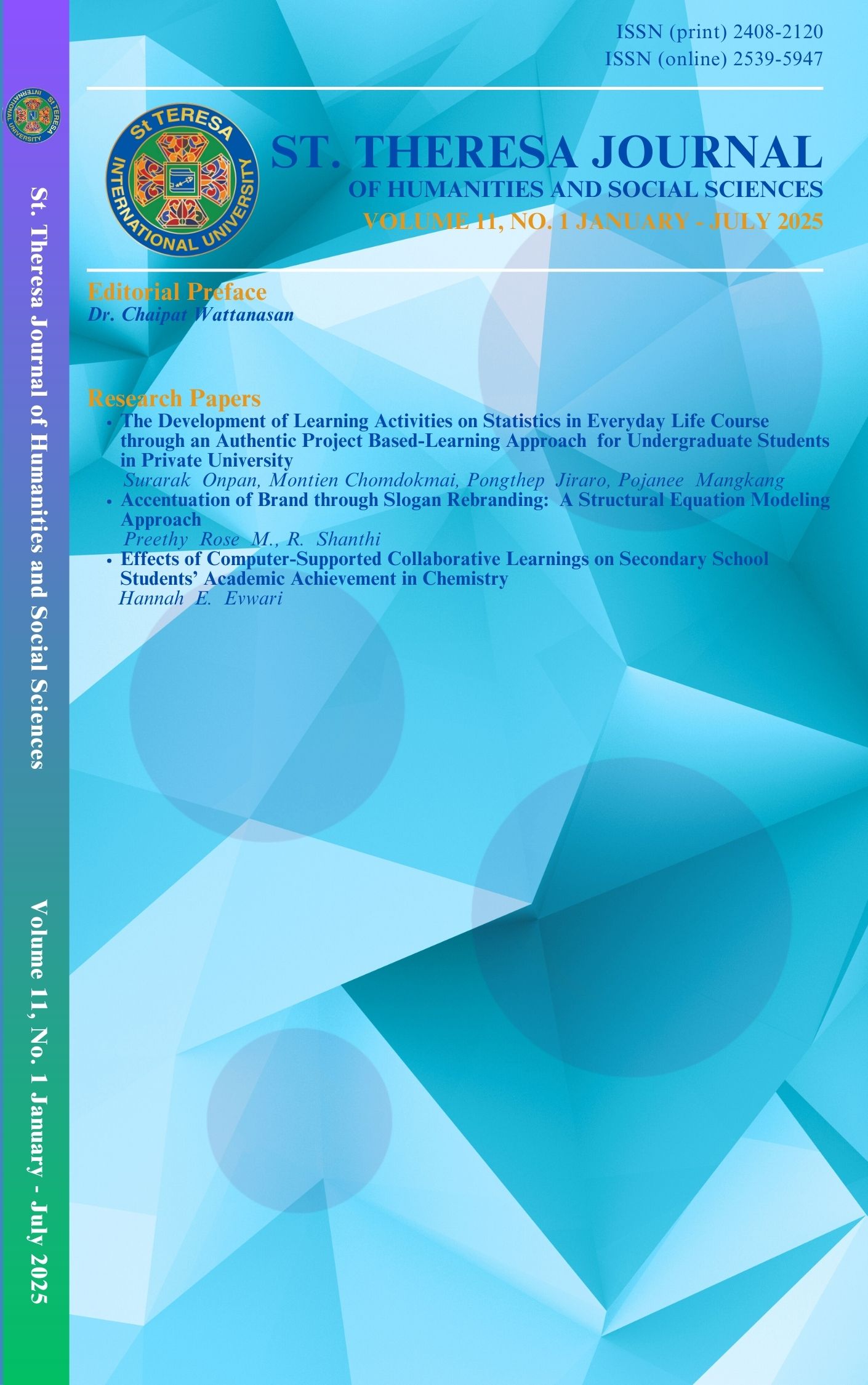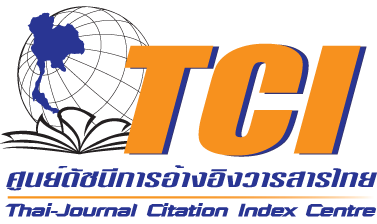The Priority Needs for Developing Trustworthy Leadership of Primary School Administrators in Thailand
Keywords:
Trustworthy Leadership, Trust, Primary School, School AdministratorsAbstract
This article explores the framework of trustworthy leadership and the trust levels of school administrators in Thailand through three key studies: (1) the conceptual framework of trustworthy leadership and leadership development, (2) the level of trust among school administrators, and (3) a needs assessment for developing trustworthy leadership in Thai primary schools. A multiphase mixed-methods approach was employed, with a sample of 1,185 participants (directors, deputy directors, and teachers) selected through multi-stage random sampling. Research instruments included two five-level rating scales: one for measuring trust in school administrators and another assessing the realistic and expected conditions of trustworthy leadership. Data analysis included frequency, percentage, mean, standard deviation (SD), and PNImodified. Key findings: (1) Trustworthy Leadership Framework – Four core aspects were identified: Management Competence, Integrity, Openness, and Caring and Concern. Two learning areas were proposed: individualized learning (mentoring, coaching, e-learning) and group learning (action learning, networking, residential/off-site learning), (2) Trust Levels – The highest trust score was for Caring and Concern (𝒙̅ = 4.57, SD = 0.697), followed by Integrity (𝒙̅ = 4.55, SD = 0.648), Openness (𝒙̅ = 4.51, SD = 0.688), and Competence, which had the lowest score (𝒙̅ = 4.48, SD = 0.661), And (3) Priority Needs Index – Group learning had a PNIModified of 0.067 (with four sub-learning areas), while individual learning had a PNIModified of 0.046 (with five sub-learning areas). These insights offer valuable guidelines for strengthening trustworthy leadership among primary school administrators in Thailand.
References
Adams, C. M., & Forsyth, P. B. (2013). Promoting a culture of trust: Building trust in schools. In C. M. Adams & P. B. Forsyth (Eds.), Trust in schools: A core resource for improvement (pp. 1–22). New York, NY: Springer.
Blanchard, K., Olmstead, C., & Lawrence, M. (2021). Trust works! Four keys to building lasting relationships. New York, NY: William Morrow.
Bryk, A., & Schneider, B. (2002). Trust in schools: A core resource for improvement. New York, NY: Russell Sage Foundation.
Day, C., Sammons, P., Hopkins, D., Harris, A., Leithwood, K., Gu, Q., & Brown, E. (2009). The impact of leadership on student outcomes: A systematic review of research. Nottingham, UK: University of Nottingham. https://doi.org/10.1080/15700763.2010.493633
Deutsch, M. (1973). The resolution of conflict: Constructive and destructive processes. New Haven, CT: Yale University Press. https://doi.org/10.1177/000276427301700206
Dirks, K. T., & Ferrin, D. L. (2002). Trust in leadership: Meta-analytic findings and implications for research and practice. Journal of Applied Psychology, 87(4), 611–628. https://doi.org/10.1037/0021-9010.87.4.611
Ehrich, L. C., Hansford, B., & Tennent, L. (2004). Formal mentoring programs in education and other professions: A review of the literature. Educational Administration Quarterly, 40(4), 518–540. https://doi.org/10.1177/0013161X04267118
Ellis, K., & Shockley-Zalabak, P. (2001). Trust in top management and immediate supervisor: The relationship to satisfaction, perceived organizational effectiveness, and information receiving. Communication Quarterly, 49(4), 382–398. https://doi.org/10.1080/01463370109385637
Goddard, M. (2009). Genomic selection: Prediction of accuracy and maximization of long-term response. Genetica, 136(2), 245–257. https://doi.org/10.1007/s10709-008-9308-0
Goleman, D. (1995). Emotional intelligence: Why it can matter more than IQ. New York, NY: Bantam Books.
Green, C. H., & Howe, A. P. (2011). The trusted advisor field book: A comprehensive toolkit for leading with trust. Hoboken, NJ: John Wiley & Sons. https://doi.org/10.1002/9781118983614
Hallinger, P., & Heck, R. H. (2010). Collaborative leadership and school improvement: Understanding the impact on school capacity and student learning. School Leadership & Management, 30(2), 95–110. https://doi.org/10.1080/13632431003663214
Hallinger, P., & Kulophas, D. (2020). The evolution of educational leadership and management in Thailand: The impact of global, national and local cultures. Educational Management Administration & Leadership, 48(4), 608–630. https://doi.org/10.1177/1741143219884673
Hallinger, P., & Lee, M. (2014). Mapping instructional leadership in Thailand: Has education reform impacted principal practice? Educational Management Administration & Leadership, 42(1), 6–29. https://doi.org/10.1177/1741143213502196
Handford, V., & Leithwood, K. (2013). Why teachers trust school leaders. Journal of Educational Administration, 51(2), 194-212. https://doi.org/10.1108/09578231311304706
Hofstede, G. (2001). Culture's consequences: Comparing values, behaviors, institutions and organizations across nations. Thousand Oaks, CA: Sage Publications. https://doi.org/10.1016/S0148-2963(98)00009-4
Hofstede, G. (2011). Dimensionalizing cultures: The Hofstede model in context. Online Readings in Psychology and Culture, 2(1), 8. https://doi.org/10.9707/2307-0919.1014
Hoy, W. K., & Tarter, C. J. (2004). Organizational justice in schools: No justice without trust. International Journal of Educational Management, 18(4), 250–259. https://doi.org/10.1108/09513540410538831
Hoy, W. K., & Tschannen-Moran, M. (2003). The conceptualization and measurement of faculty trust in schools. In W. K. Hoy & C. G. Miskel (Eds.), Studies in leading and organizing schools (pp. 181–207). Information Age Publishing.
Katzenbach, J. R., & Smith, D. K. (1993). The wisdom of teams: Creating the high-performance organization. Boston, MA: Harvard Business Review Press.
Kouzes, J. M., & Posner, B. Z. (2017). The leadership challenge: How to make extraordinary things happen in organizations. Hoboken, NJ: Wiley. https://doi.org/10.1002/9781119482000
Kulopas, P. (2018). Trust in educational leadership: Perspectives and practices in Thai schools. Bangkok, Thailand: Chulalongkorn University Press.
Lapidot, Y., Kark, R., & Shamir, B. (2007). The impact of situational vulnerability on the development and erosion of followers' trust in their leader. The Leadership Quarterly, 18(1), 16–34. https://doi.org/10.1016/j.leaqua.2006.11.004
Leithwood, K., & Jantzi, D. (2009). Transformational school leadership effects: A replication. School Effectiveness and School Improvement, 20(4), 457–479. https://doi.org/10.1080/09243450902909599
Louis, K. S., Marks, H. M., & Kruse, S. (1996). Teachers' professional community in restructuring schools. American Educational Research Journal, 33(4), 757–798. https://doi.org/10.3102/00028312033004757
Luhmann, N. (1979). Trust and power. Chichester, UK: Wiley.
Mayer, R. C., Davis, J. H., & Schoorman, F. D. (1995). An integrative model of organizational trust. Academy of Management Review, 20(3), 709–734. https://doi.org/10.5465/amr.1995.9508080335
Ministry of Education, Thailand. (2019). Leadership development program. Retrieved from http://www.moe.go.th/leadership-development
Mishra, A. K. (1996). Organizational responses to crisis: The centrality of trust. In R. M. Kramer & T. R. Tyler (Eds.), Trust in organizations: Frontiers of theory and research (pp. 261–287). London, UK: Sage Publications. https://doi.org/10.4135/9781452243610.n13
Mishra, A., & Mishra, K. E. (2013). Becoming a trustworthy leader: Psychology and practice. London, UK: Routledge. https://doi.org/10.4324/9780203590263
Mulford, B. (2003). School leaders: Changing roles and impact on teacher and school effectiveness. Paris, France: OECD Publishing.
OECD. (2019). PISA 2018 results (Volume III): What school life means for students' lives. Paris, France: OECD Publishing. https://doi.org/10.1787/acd78851-en
Phongpaichit, P., & Baker, C. (2018). Thailand's political economy and education. Journal of Asian Studies, 77(2), 433–455. https://doi.org/10.1017/S0021911818000025
Punthumasen, P. (2007). International program for teacher education: An approach to tackling problems of English education in Thailand. Paper presented at the 11th UNESCO-APEID International Conference, Bangkok, Thailand.
Rempel, J. K., Holmes, J. G., & Zanna, M. P. (1985). Trust in close relationships. Journal of Personality and Social Psychology, 49(1), 95–112. https://doi.org/10.1037/0022-3514.49.1.95
Robinson, V. M., Hohepa, M., & Lloyd, C. (2007). School leadership and student outcomes: Identifying what works and why (Vol. 41, pp. 1–27). Winmalee, Australia: Australian Council for Educational Leaders.
Rotter, J. B. (1971). Generalized expectancies for interpersonal trust. American Psychologist, 26(5), 443–452. https://doi.org/10.1037/h0031464
Supovitz, J. A., Sirinides, P., & May, H. (2010). How principals and peers influence teaching and learning. Educational Administration Quarterly, 46(1), 31–56. https://doi.org/10.1177/1094670509353043
Tarter, C. J., & Hoy, W. K. (1988). The context of trust: Teachers and the principal. The High School Journal, 72(1), 17–24.
Tschannen-Moran, M. (2014). The interconnectivity of trust in schools. In D. Van Maele, P. B. Forsyth, & M. Van Houtte (Eds.), Trust and school life: The role of trust for learning, teaching, leading, and bridging (pp. 57–81). Springer. https://doi.org/10.1007/978-94-017-8014-8_3
Tschannen-Moran, M. (2014). Trust matters: Leadership for successful schools. Hoboken, NJ: John Wiley & Sons. https://doi.org/10.1002/9781119175477
Tschannen-Moran, M., & Gareis, C. R. (2015). Faculty trust in the principal: An essential ingredient in high-performing schools. Journal of Educational Administration, 53(1), 66–92. https://doi.org/10.1108/JEA-02-2014-0024






